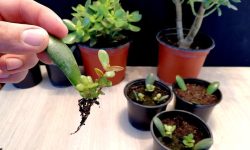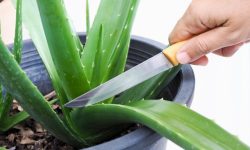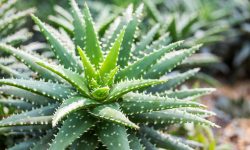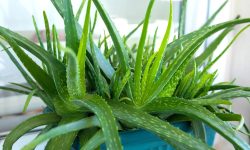Caring for a jade plant may seem simple, yet the plant responds best when its needs are understood clearly. This slow-growing succulent develops strong leaves and woody stems that change shape with time. Many growers admire its steady nature, but proper care plays a major role in its long-term health. Light, water, and soil each influence the plant in different ways. When these elements stay balanced, the jade plant grows with a calm and stable rhythm. This balance also protects the plant from stress and helps it maintain bright color.
A jade plant rewards patient growers with durable structure and dependable growth. Its ability to store water makes it forgiving, but it still requires thoughtful routine care. Simple adjustments keep the plant healthy and prevent common problems. Each stage of care builds stronger tissues that support future development. When you understand what the plant needs, your jade stays vibrant and resilient for many years. This guide explores practical methods that work consistently and help your jade plant thrive with confidence.
Understanding the Natural Growth Pattern of Jade Plants

Jade plants follow a slow and steady growth pattern that reflects their adaptation to dry environments. Their thick leaves store water, allowing them to survive long gaps between watering. This natural structure shapes how they respond to every care decision. When moisture remains balanced, the plant maintains firm leaves and steady color. Too much water disrupts this rhythm and weakens internal tissues. Understanding this pattern helps you create a routine that supports long-term health. A jade plant thrives when its natural pace remains respected and uninterrupted.
Growth also depends on consistent light exposure. Jade plants rely on bright indirect light to build strong stems and compact foliage. Low light triggers stretching, which produces long, weak branches with thin leaves. This change reduces stability and alters the plant’s shape. When the plant receives enough brightness, its leaves stay thick and glossy. Light also fuels energy production, which influences rooting and branch formation. Proper lighting keeps the growth pattern balanced and prevents structural problems. The plant becomes stronger when its light needs remain steady. Consistent brightness helps maintain a compact and attractive form.
Seasonal changes influence the jade plant’s yearly rhythm. These succulents grow more actively during warm months and slow down once temperatures drop. This shift affects water needs, drying time, and overall energy use. Cold seasons require a calmer approach with lighter watering and stable temperatures. Warm months support faster growth, stronger roots, and increased moisture use. Understanding this cycle prevents confusion and reduces stress during transitions. When you match your care routine with the plant’s natural rhythm, the jade plant grows with clarity and stability. This foundation ensures healthier development and better resistance to future stress.
Providing the Correct Light Conditions
Light is one of the most important factors affecting a jade plant’s overall health. These succulents depend on bright indirect light to maintain strong leaves and compact structure. When the plant receives steady brightness, it builds firm foliage with rich color. Insufficient light causes stretching, which creates weak branches and thin leaves. This imbalance affects long-term growth and reduces stability. A jade plant becomes healthier when its light source remains consistent. Stable brightness supports a natural rhythm and improves resilience.
Direct sunlight can help jade plants when managed carefully. Morning sun provides gentle warmth that supports daily energy production. However, strong afternoon light may scorch the leaves and create dry patches. Placing the plant near a bright window protects it from harsh rays. Filtered light prevents overheating and supports calm hydration. This approach works well for young or newly rooted plants. Jade plants grow best under light conditions that feel bright but never overwhelming. Balanced exposure encourages dense foliage and strong root support.
Indoor growers must adjust placement as seasons change because brightness shifts throughout the year. Winter light becomes weak, so the plant may need more exposure or a closer position to the window. Summer light grows intense, so moving the plant slightly away helps prevent burning. Rotating the plant every few weeks maintains even growth and avoids leaning toward one side. Leaf color provides helpful clues about light needs. Pale leaves indicate low light, while reddish edges show increased exposure. Observing these signals helps you refine placement with confidence. Proper lighting ensures your jade plant grows evenly and remains vibrant through every season.
Watering the Jade Plant the Right Way
Watering remains one of the most important aspects of jade plant care because this succulent manages moisture differently from many houseplants. Its thick leaves hold water for long periods, allowing the plant to tolerate extended dryness. Because of this ability, jade plants need careful and infrequent watering rather than routine watering. Allowing the soil to dry completely protects the roots from stress and helps maintain firm leaves and rich color. Overwatering disrupts the plant’s natural hydration cycle and may cause early signs of weakness. A well-timed watering routine supports stable development and strengthens the plant’s internal structure.
A jade plant responds clearly when its watering needs become unbalanced. Leaves feel soft or swollen when excess moisture builds inside the tissues. Soil that stays wet for days restricts oxygen flow and weakens root fibers. Without proper airflow, root rot appears and spreads quickly. Dry intervals allow the soil to breathe and encourage the plant to form stronger roots. Light and controlled watering provides gentle hydration without overwhelming the plant. Touching the soil remains the best method for judging dryness. When the top layer feels dusty and loose, the plant is ready for another watering cycle. This simple habit helps maintain long-term health.
Seasonal changes also influence moisture needs. Warmer months increase growth and create faster moisture use, requiring slightly more frequent watering. Cooler months slow growth and extend drying time. Adjusting your routine during these seasonal shifts prevents dehydration and rot. Young plants, recently repotted plants, or stressed plants require additional caution because their roots remain sensitive. Stable temperatures and bright indirect light help balance hydration and prevent sudden stress. When watering aligns with the plant’s natural rhythm, jade plants grow with confidence, stability, and stronger resilience through every season.
Choosing the Best Soil and Pot for Jade Plants
Choosing the right soil and pot has a major impact on jade plant health. These succulents rely on sharp drainage because their roots cannot tolerate long periods of moisture. A loose and airy soil mix allows water to pass through quickly while keeping enough structure for healthy root support. Heavy soils trap moisture and reduce airflow, which increases the risk of rot. A mix designed for succulents or cacti offers the ideal balance. This type of soil creates a safe environment for steady growth and long-term stability.
The pot also influences how well the jade plant manages moisture. Containers with wide drainage holes prevent excess water from lingering at the bottom. Clay pots remain a strong choice because they allow moisture to escape through the sides. This natural evaporation helps protect the root system, especially in humid rooms. Plastic pots hold moisture longer, so careful watering becomes essential. The pot must match the plant’s growth stage. A small pot supports stronger roots, while a large pot can hold too much water. Choosing the correct pot size prevents unnecessary stress.
Repotting a jade plant requires attention to timing and technique. These plants prefer slow adjustments, so repotting should happen only when roots fill the container. Disturbing the soil too often interrupts growth and weakens the plant. When repotting, place the plant in fresh soil and avoid watering immediately. Allowing the soil to settle keeps moisture controlled. Bright indirect light also helps the plant adjust. A thoughtful combination of proper soil, suitable pot material, and careful repotting supports balanced hydration and promotes long-term health. This foundation keeps your jade plant strong and ready for stable future growth.
Maintaining Ideal Temperature and Humidity
Temperature plays a central role in jade plant health because these succulents evolved in dry and warm environments. They grow best in stable temperatures that sit comfortably in the moderate range. Sudden drops slow cell activity and weaken the plant’s natural rhythm. Extreme heat also creates stress by pulling moisture from the leaves too quickly. A jade plant thrives when its environment stays predictable and calm. Stable warmth encourages balanced hydration and supports stronger root development.
Humidity levels also influence the plant’s daily comfort. Jade plants prefer dry air because high humidity slows evaporation and encourages fungal growth. When humidity rises, the soil stays moist for longer periods, increasing the risk of rot. Good airflow reduces these risks and keeps the plant dry between waterings. Placing the plant in a location with natural circulation helps maintain healthy leaf surfaces. Humidity control becomes especially important indoors, where air often stays still. Dry, moving air supports the plant’s natural growth rhythm.
Seasonal shifts require careful adjustments to temperature and humidity. Winter months bring cooler air, so keeping the plant away from cold windows prevents shock. Heating systems may create dry air, but jade plants adapt well to this condition. In summer, increased humidity may require more airflow or occasional relocation. Observing the plant’s leaves helps you understand its comfort level. Firm and bright leaves signal balanced conditions, while limp or dull leaves suggest environmental stress. Maintaining ideal temperature and humidity ensures your jade plant stays strong, stable, and ready for consistent long-term growth.
Fertilizing Your Jade Plant for Steady Growth
Fertilizing a jade plant requires a balanced approach because these succulents grow slowly and store nutrients efficiently. Heavy feeding overwhelms the roots and creates leaf discoloration. Light feeding supports steady growth without stressing the plant. A diluted fertilizer applied during the active growing season provides enough nutrients for new leaves and stronger stems. Feeding at the right time also improves root strength and overall stability. Understanding these needs helps you create a predictable routine.
Jade plants respond best to fertilizer during warm months when their growth rate increases. During this period, the plant uses stored nutrients more quickly and benefits from gentle support. A diluted, balanced formula encourages new tissue without forcing rapid growth. Avoid fertilizing during winter because the plant slows down and absorbs nutrients poorly. Feeding at the wrong time leads to weak and stretched growth. Observing seasonal patterns ensures you match the plant’s natural rhythm. This alignment supports healthier and more controlled development.
Monitoring the plant’s reaction helps you refine your feeding schedule. Bright leaves with firm structure indicate balanced nutrition, while pale or soft leaves suggest stress. Overfertilizing may cause leaf burn or drooping stems, signals that require immediate adjustment. Flushing the soil with clean water helps remove excess nutrients and restore balance. Consistent lighting and proper watering also influence how well the plant processes fertilizer. When these factors work together, your jade plant grows with stable energy and improved resilience. A thoughtful feeding routine supports long-term strength and prepares the plant for full, healthy development.
Pruning and Shaping the Jade Plant
Pruning a jade plant supports healthy structure and prevents uneven growth. These succulents develop thick stems that may stretch or lean if lighting changes or airflow weakens. Removing weak or elongated branches restores balance and encourages stronger development. Pruning also improves airflow through the plant’s canopy, reducing moisture buildup around the leaves. This protection helps prevent fungal issues and keeps the plant stable. A jade plant becomes healthier when older or damaged sections are removed with care. Clean cuts encourage the plant to redirect energy toward stronger branches.
Shaping the plant gives you more control over how it grows in the long term. Jade plants respond quickly to shaping because each cut encourages branching near the node. This process helps create dense foliage and a more rounded form. Shaping also prevents the plant from becoming top-heavy, which can cause tipping or stem fractures. Balanced shaping maintains equal weight on both sides of the main stem. When the plant grows evenly, it develops a attractive structure that remains stable as it ages. A shaped jade plant becomes more resistant to environmental stress.
Timing and technique matter greatly during pruning and shaping. Jade plants react best when trimmed during warm months because this period supports active healing. Cutting during colder months slows recovery and increases stress. Always use clean tools to protect the plant from infection. After pruning, allow the cut surfaces to dry naturally before watering again. This drying period reduces the chance of moisture entering the exposed tissue. Place the plant in bright indirect light to support new growth and recovery. Consistent shaping over time builds a strong framework that supports long-term health and beauty.
Recognizing and Treating Common Jade Plant Problems
Identifying Early Stress Signs in Jade Plants
Jade plants display clear signals when they experience stress, so early observation becomes extremely important. Soft leaves usually indicate excess moisture inside the tissues, while dull and wrinkled leaves suggest dehydration. Sudden leaf loss often happens when the plant reacts to temperature shifts or rapid environmental changes. These signals help you understand the plant’s internal balance before major issues form. When you notice these changes early, you can adjust care routines quickly. Correcting these conditions protects the plant and supports healthy recovery.
Monitoring the plant’s response over several days helps you understand whether the adjustments work. Stable temperature and bright indirect light reduce stress and restore firmness in the leaves. A jade plant recovers well when moisture levels return to balanced conditions. Avoid rushing the process because sudden changes can worsen symptoms. Allow the soil to dry fully and reduce watering during early stress. When conditions stabilize, the plant begins to rebuild energy and strengthen its root system. Early detection ensures that the jade plant maintains steady growth and avoids long-term damage.
Managing Pest Problems Before They Spread
Pests appear on jade plants when conditions favor insects such as mealybugs, scale, or spider mites. Warm rooms with low airflow create the perfect environment for these pests to settle. Mealybugs appear as small white clumps on stems, while scale forms tiny brown bumps along leaf surfaces. Spider mites create thin webs that spread across new growth. Early detection prevents these pests from draining the plant’s energy. Inspecting the leaves weekly helps you catch the first signs of infestation. Taking action early keeps the plant safe.
Removing pests by hand works well when the population remains small. Wiping leaves gently with a damp cloth removes insects without damaging the plant. Increasing airflow discourages pests and reduces humidity around the foliage. If pests continue to appear, isolate the plant to prevent spreading. Reduce watering because moisture attracts additional pests and weakens new growth. Consistent lighting also helps the plant maintain energy during recovery. Addressing pest problems calmly protects the jade plant’s strength and helps it regain stable growth over time.
Preventing and Treating Fungal or Rot Issues
Fungal problems develop when jade plants experience prolonged moisture or weak airflow. Root rot remains the most serious issue because symptoms often appear late. Soft stems, mushy leaves, and darkened roots indicate severe moisture imbalance. Fungus thrives in wet soil and spreads quickly along the plant’s base. Recognizing these early symptoms helps you respond before the root system collapses. A jade plant with early fungal signs still recovers well when moisture levels change. Proper drying becomes the first step toward healing.
Allowing the soil to dry completely helps stop fungal growth and restores internal balance. If rot continues, repotting becomes necessary. Gently remove the plant from the pot and trim damaged roots. Place it in fresh, well-draining soil and avoid watering for several days. Bright indirect light helps strengthen new root activity during recovery. Good airflow prevents moisture buildup and reduces fungal risk as the plant heals. Adjusting watering habits remains the most effective prevention method. When you maintain dryness and stable conditions, the jade plant returns to steady growth with improved resilience.
Repotting the Jade Plant at the Right Time
Repotting a jade plant requires careful timing because these succulents prefer stable environments. They grow slowly and do not enjoy frequent disturbances, so unnecessary repotting may interrupt their natural rhythm. The best time to repot is when roots begin circling the pot or emerging from drainage holes. This signal shows that the plant needs more space to expand. Repotting at the right moment supports steady growth and protects the plant from stress. Allowing the plant to outgrow its pot too much restricts its development and weakens root structure.
A jade plant responds best when repotted during warm months because higher temperatures support quicker healing. New soil encourages fresh root growth and improves moisture control. Using a well-draining mix prevents water from lingering around sensitive new tissue. After removing the plant from its pot, check the roots for signs of rot or damage. Trimming unhealthy roots helps create a clean start. Placing the plant into fresh soil encourages stronger growth during the next cycle. Avoid watering immediately because the plant needs time to settle and form stability.
After repotting, the plant adjusts more easily when placed in bright indirect light. This lighting supports recovery without stressing new roots. Allow several days for the soil to rest before adding moisture. Watering too soon may overwhelm the roots and slow healing. Observing the plant’s leaves helps you track progress. Firm leaves indicate stable hydration, while limp leaves suggest adjustment stress. Repotting at proper intervals keeps the plant strong, improves root circulation, and supports long-term health. When timed correctly, repotting becomes a simple process that enhances stability and prepares the jade plant for continued growth.
Supporting Healthy Growth Through Seasonal Care
Seasonal care plays an essential role in maintaining a jade plant’s long-term health. These succulents change their growth rhythm throughout the year, so your care routine must shift with them. During warm months, jade plants grow more actively and use moisture at a faster pace. Longer daylight hours support new shoots and stronger leaf development. Adjusting your routine to match this rhythm prevents stress and encourages stable growth. When you observe these seasonal patterns, the plant responds with clearer color and firmer leaves.
As temperatures cool, the jade plant naturally slows its growth. This seasonal slowdown helps the plant conserve energy and prepare for lower light conditions. Watering must also change during this time because soil dries more slowly in cool environments. A lighter watering routine protects the roots from excess moisture. The plant benefits from steady temperatures and gentle airflow during colder months. Bright indirect light continues to support leaf health, even when growth slows. Understanding this cycle prevents overwatering, drooping leaves, and unnecessary stress.
Seasonal transitions also influence repotting, pruning, and feeding routines. Fertilizer should be reduced or stopped entirely during winter because the plant cannot use nutrients efficiently. Pruning also becomes less effective during colder seasons because healing slows significantly. Most major adjustments should happen during warmer months when the plant can recover more easily. Observing how the jade plant responds each season helps you develop an intuitive care routine. Balanced seasonal care strengthens the plant’s structure and prepares it for healthy growth year after year.
Encouraging Bushier and More Compact Growth
Encouraging compact growth helps jade plants develop strong, balanced structures. These succulents naturally grow upward, but proper care can help them branch more evenly. Light plays the biggest role in shaping compact growth. Bright indirect light prevents stretching and supports short internodes. When the plant receives enough brightness each day, the stems thicken and leaves stay close together. This compact spacing creates a fuller appearance and reduces the chance of weak or floppy branches. Balanced lighting remains the foundation for bushier development.
Pinching or trimming the growing tips also encourages new branching. When the top growth is removed, the plant directs its energy into side nodes. These nodes then develop into new branches that increase fullness. This process must happen gradually because jade plants prefer slow adjustments. Removing too much growth at once may shock the plant and slow its rhythm. Light trimming during warm months produces the best results. Each trimmed point becomes a center for new leaves, which strengthens the overall structure. Over time, this routine creates a fuller and more attractive plant.
Proper care supports compact growth beyond pruning and lighting. Consistent watering encourages the plant to maintain steady internal pressure, which supports firm leaves and strong stems. Allowing the soil to dry between waterings prevents stretching caused by soft, overhydrated tissues. Providing bright light, controlled watering, and occasional trimming helps the jade plant build a dense canopy. Observing the plant’s response helps refine your technique. When these methods work together, your jade plant becomes fuller, more balanced, and better prepared for long-term stability.
FAQs About Caring for a Jade Plant
How often should I water a jade plant?
Water only when the soil becomes completely dry. Jade plants store moisture in their leaves, so they need less frequent watering. Overwatering causes root problems and soft leaves. Allowing full drying supports strong roots and stable growth. This simple routine protects the plant through every season.
Why are my jade plant’s leaves turning yellow?
Yellow leaves often indicate excess moisture or poor soil drainage. When roots stay wet too long, stress appears through leaf discoloration. Bright indirect light and fully dried soil help restore balance. Repotting may be needed if the soil remains heavy. Correcting moisture improves color and long-term health.
Can jade plants grow in low light?
Jade plants tolerate low light but grow weakly in those conditions. Limited brightness causes stretching and thin stems. Bright indirect light creates compact growth and firm leaves. Move the plant closer to a bright window without exposing it to harsh sun. Better lighting improves structure and overall strength.
When should I repot my jade plant?
Repot when roots fill the pot or appear from drainage holes. This signal shows the plant needs more space. Repotting during warm months supports faster recovery. Use fresh, well-draining soil and avoid watering immediately. Proper timing reduces stress and encourages stronger root development.
How do I make my jade plant grow fuller?
Provide bright indirect light, allow soil to dry, and pinch the growing tips. These steps encourage branching and compact growth. Trimming during warm months supports faster recovery. Steady lighting and controlled watering help maintain firm leaves. With consistent care, the plant becomes bushier and more balanced.
Final Thoughts
Caring for a jade plant becomes easier when you understand its natural rhythm and slow, steady growth style. These succulents respond best to calm environments, bright indirect light, and careful watering. When their needs stay balanced, they reward you with firm leaves, strong stems, and dependable long-term health. Small adjustments in lighting, watering, and seasonal care create noticeable improvements in growth and structure. A jade plant grows patiently, so consistent routines matter far more than frequent changes. When you match your care with the plant’s natural habits, the jade thrives with clarity and confidence. With time, your plant becomes a durable and beautiful part of your living space.






